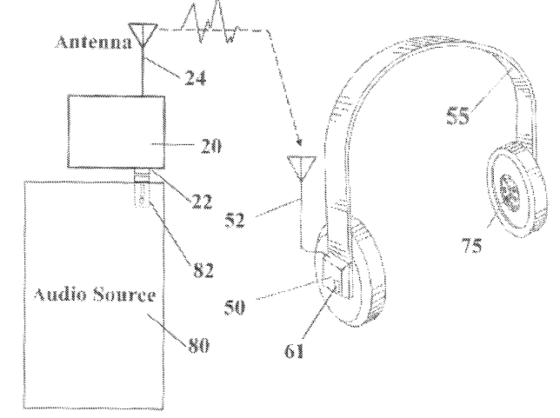Meta Claim Construction: Finding Meaning in the Meaning
LIKELIHOOD OF CONFUSION® 2023-08-14
by Dennis Crouch
One-E-Way, Inc. v. Apple Inc., 22-2020 (Fed. Cir. Aug. 14, 2023) (nonprecedential) (Opinion by Chief Judge Moore, joined by Judges Lourie and Stoll).

The district court sided with Apple on summary judgment, finding no infringement. On appeal, the Federal Circuit has affirmed, holding that Apple’s accused Bluetooth products do not infringe One-E-Way’s patents. Although the parties had agreed to the construction of the “unique user code” term, they disagreed over the construction-of-the-construction. On appeal, the court treated this meta-construction effectively as a form of claim construction — looking for the ordinary meaning rather than a contract-like interpretation that would have looked more toward discerning the intent of the parties.
One-E-Way sued Apple for infringing the claims of two patents related to a wireless digital audio system that allows private listening without interference. The system uses a transmitter connected to an audio source and a receiver connected to headphones. The transmitter contains a code generator that generates a “unique user code” associated with a specific user to allow pairing between the transmitter and receiver.
During the infringement litigation, the parties agreed to construe “unique user code” as a “fixed code (bit sequence) specifically associated with one user of a device(s).” Although Apple’s Bluetooth products do transmit a unique code to establish the connection, the code is not unique to the user, but rather it is unique to the Bluetooth device. The district court agreed with Apple’s assessment and granted summary judgment of non-infringement.
On appeal, One-E-Way argued that the “unique user code” limitation is still met by Apple’s accused Bluetooth products. Specifically, One-E-Way contended that even though the Bluetooth address codes are associated with devices, the codes are still associated with individual users through operation of the device. In other words, One-E-Way argued that Bluetooth pairing to a particular device is equivalent to pairing with a specific user. This argument makes the assumption that each device is limited to just “one user.” Although that assumption is not strictly true, I expect that it holds true in 99% of cases. For a while, I shared Bluetooth headphones with one of my daughters–it did not work well at all.
The Federal Circuit rejected this argument, finding that it was inconsistent the claim construction which clearly states the code is associated with “one user.” rather than the device itself. Even if the Bluetooth address code is associated with a user through use of the device, the code remains fundamentally associated with the device. The Federal Circuit found no evidence that the code itself becomes directly linked to the user, rather than the device, through pairing and use.
The arguments in this case are somewhat meta. The parties are not arguing about claim construction per se, but rather construction of the construction. In the appeal, the Federal Circuit considered the “plain and ordinary meaning of the agreed-upon construction” and concluded that it required required a more direct link to a user. As it would with ordinary claim construction, the court looked to the specification for support. In particular, the court noted that the patent specifications “distinguish between users and devices when describing the purpose of the invention” and recognized the problem of conflict that I had with sharing Bluetooth accessories. “The patents’ consistent reference to ‘user’ and ‘device’ as distinct entities and association of the unique user code with ‘user’ supports the district court’s conclusion that ‘one user of a device’ does not mean the device itself.” Slip Op.
Non-infringement affirmed.
= = =
The patents at issue are:
– U.S. Patent No. 10,129,627 – U.S. Patent No. 10,468,047
The ‘627 and ‘047 patents share the same specification. The court treated Claim 1 of the ‘627 patent as representative.
